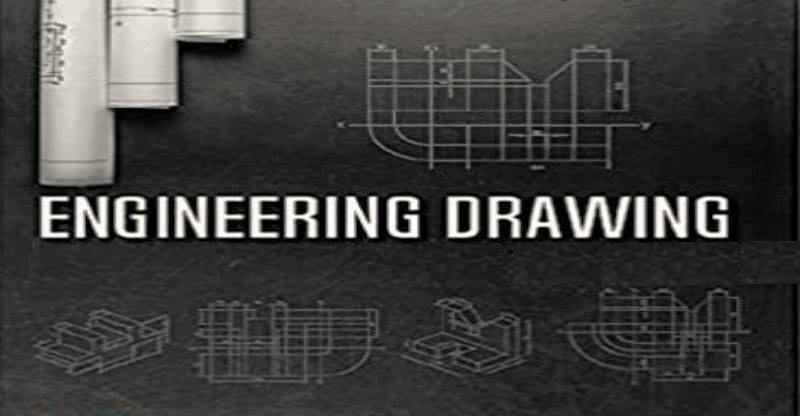SHAFT COUPLING:
A rotating piece of rod coupled to a machine is called shaft. It has a circular cross-section and always transmits power from one point to another along its length. The shaft length are not available beyond a certain limit due to manufacturing and transporting difficulties. If very long shafts are required for any application, two or more shaft pieces may be connected or coupled together to obtain the requisite length. The connection used for joining pieces of shaft together is known as shaft coupling.
Shaft couplings are used to join or connect two shafts in such a way that when both the shafts rotate, they act as one unit and transmit power from one shaft to the other. Shafts to be connected or coupled may have collinear axes, intersecting axes or parallel axes at a small distance. Based on the requirements, the shaft couplings are classified as: (i) rigid couplings, (ii) flexible couplings
MUFF COUPLING:
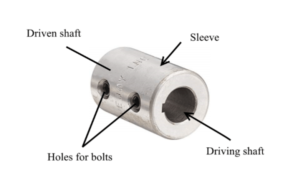
It consists of a sleeve called muff which is fitted over the ends of the shafts to be connected. After properly aligning the keyways in the shafts and sleeve, a sunk key is driven-in; thus making the coupling. Instead of a single key running the entire length of the sleeve, it is desirable to use two keys, which may be inserted from the outer ends of the sleeve; thus overcoming the possible misalignment between the keyways.
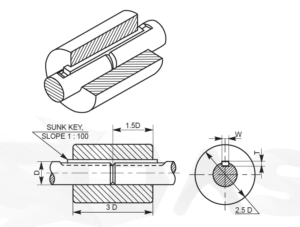
SPLIT MUFF COUPLING:
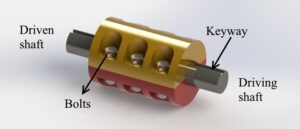
In this, the muff is split into two halves and are recessed. A number of bolts and nuts are used to connect the muff halves and the recesses provided accommodate the bolt heads and nuts. For making the coupling, a sunk key is first placed in position and then the muff halves are joined by bolts and nuts. This type of coupling is used for heavy duty work, since both the key and friction grip transmit the power (torque). The heads of nuts and bolts are completely covered in the slots provided in the muff. It can be easily assembled and disassembled when required.
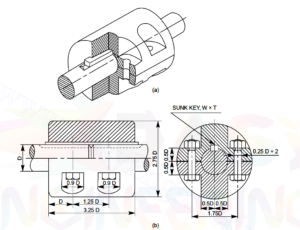
FLANGE COUPLING:
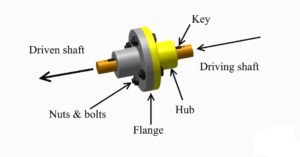
In a flanged coupling, flanges are either fitted or provided at the ends of shafts. The flanges are fastened together by means of a number of bolts and nuts. The number and size of the bolts depend upon the power to be transmitted and hence, the shaft diameter.
UNPROTECTED FLANGE COUPLING
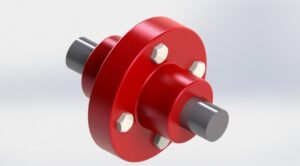
It consists of two similar discs called flanges. Each flange is keyed to needs of shafts to be coupled. To secure both the flanges together, both the flanges have four to six holes to receive the bolts. When these flanges are bolted together, they form a rigid joint between the two shaft ends.
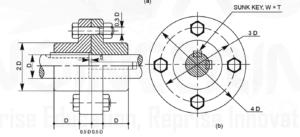
PROTECTED FLANGE COUPLING

In this coupling, the outer surface of each flange is protected outward axially to cover bolt heads and nut and to form a flat outer surfaces like that of pulley. It may be used as pulley also. The depression in the centre of one flange and projection on the other is formed for helping in obtaining perfect alignment between shafts.
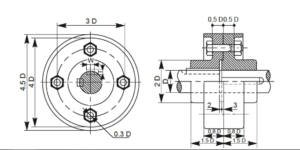
FLEXIBLE COUPLING:
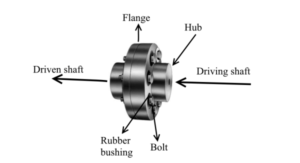
It is a very important type of coupling to couple two shafts which are slightly out of alignment or which required slight relative angular movement.
Perfect alignment of two shafts is impossible to achieve and difficult to maintain, because of inevitable bearing wear and other reasons. To overcome the trouble, flexible couplings are employed. These permit relative rotation or variation in the alignment of shaft axes within certain limits.
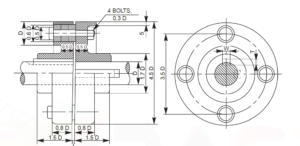
It consists of tow flanges mounted over their respective shaft ends. The coupling of two flanges is done with the help of pin and nut. These pins are fixed on one flange with the the help of nuts. On the other side of pin, some compressive or flexible material such as springs, rubber or leather washers are used to obtain jerk proof starting of the machines. This system is also used where perfect alignment between shaft to be coupled is not possible. The rubber washers also serve as insulating material between two flanges in the case of electric motors.
RELATED VIDEOS FOR SHAFT COUPLING:
